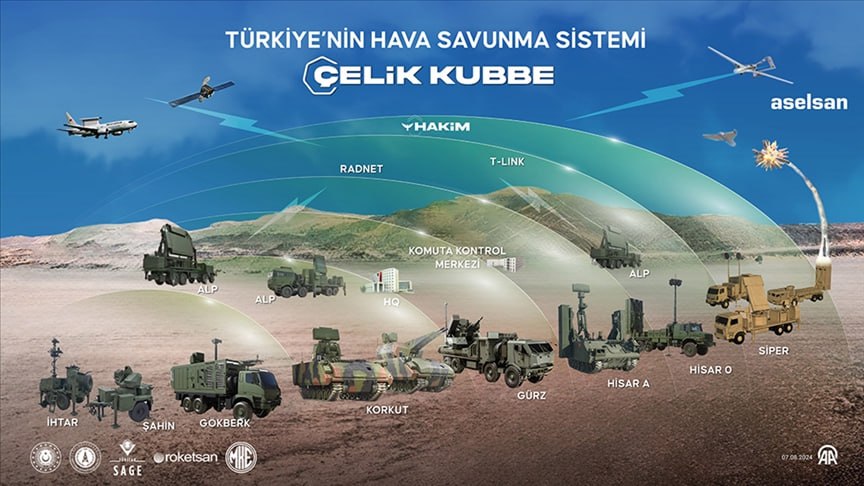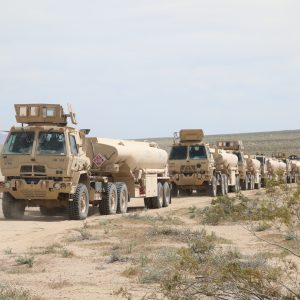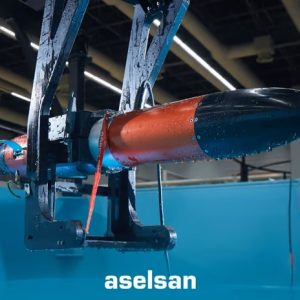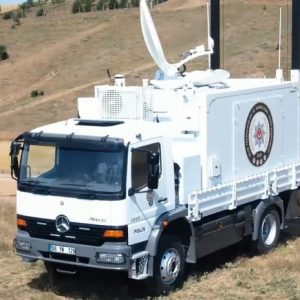Türkiye has officially unveiled the ASELSAN Steel Dome—an integrated, layered air and missile defence architecture that fuses national sensors, command‑and‑control, and interceptors. The ASELSAN Steel Dome anchors a cost‑effective defence against drones, cruise missiles, and select ballistic threats by combining HAKİM/HERİKKS C2, long‑range early‑warning radars, and the HİSAR–SİPER interceptor family. [1][2][3]
Why it matters
The ASELSAN Steel Dome positions Türkiye to manage the full spectrum of contemporary air threats—from mini‑UAS and RAM salvos to cruise missiles and select ballistic profiles—under a sovereign, networked C2 spine. Strategically, this reduces reliance on foreign suppliers and aligns with NATO‑interoperable Integrated Air and Missile Defence (IAMD) practices while preserving national control of critical technologies. [2][3]
From an industrial perspective, the $1.5B Oğulbey technology base expands radar, C2 and effector production, creating inventory depth and sustainment capacity. It also underwrites exports of modular subsystems (radars, EO, C2 nodes) for partners seeking layered air defence without vendor lock‑in. [2]
“Steel Dome is not a single product; it is a system‑of‑systems in which C2 and sensing quality drive every successful intercept.”
Architecture: how the ASELSAN Steel Dome fits together
The architecture marries multi‑sensor early warning with hierarchical‑but‑elastic engagement control.
C2 backbone: HAKİM + HERİKKS
At the operational level, HAKİM Air C2 aggregates tracks, performs threat evaluation/weapon assignment, and orchestrates mixed SAMs and air assets across the national airspace. HAKİM 100/RAD (RadNet) modernises radar‑network management for common interfaces, coverage display and data fusion. At the tactical edge, HERİKKS 600/600‑T delivers pop‑up defended areas, local early warning and resilient data‑links for point/area defence. [6][7][15]
What this enables: a unified recognised air picture (RAP), distributed engagement authority to reduce sensor‑to‑shooter latency, and more efficient weapon‑target pairing across tiers.
Radar layer: long‑range early warning + multi‑function fire control
EIRS / ALP‑series S‑band radars provide long‑range detection, including low‑RCS and ballistic tracking. KALKAN II (X‑band) offers mobile 3D search/track for SHORAD/MRAD fire control, with electronic protection and digital pulse compression. STR‑family radars add RAM trajectory detection and emerging C‑UAS modes; EO/IR trackers augment classification and aim‑point quality on the last mile. [8][9]
Effector layer: cost‑effective defeat of diverse threats
VSHORAD/C‑UAS/C‑RAM. ŞAHİN 130/40GL employs ATOM 40 mm airburst rounds to defeat mini/micro‑UAVs; GÖKER 35 mm and KORKUT 150/35 & 110/35S extend coverage for mobile and fixed sites. At sea, GÖKDENİZ CIWS protects littoral nodes and naval units with dual‑35 mm and ATOM ABM. [11][12][13]
SHORAD/MRAD. HİSAR‑A/HİSAR‑O+ provide medium‑altitude/medium‑range coverage against aircraft, cruise missiles and UAVs, integrated into HERİKKS batteries. [10]
LRAD. SİPER (Product‑1) anchors the upper tier following serial‑production acceptance tests completed in late July 2025, with range/altitude growth planned in follow‑on blocks. [4][5]
Operational logic: align cost with threat
The ASELSAN Steel Dome applies a simple rule: use the cheapest effective effector first. Networked airburst guns and low‑cost interceptors attrit drone swarms and RAM, preserving HİSAR and SİPER rounds for demanding kinematics (sea‑skimming cruise missiles, high‑altitude aircraft, select ballistic profiles). This cost‑per‑kill discipline is central to sustainable air defence.
Comparison: Steel Dome vs peer architectures
Iron Dome (Israel) excels at short‑range rockets/RAM with a dedicated interceptor (Tamir). ASELSAN Steel Dome is broader: a national IAMD framework spanning VSHORAD to LRAD, using guns, SHORAD missiles and long‑range interceptors under a single C2 fabric. NATO IAMD concepts emphasise interoperability; HAKİM/HERİKKS and RadNet point toward that direction while keeping sovereign control. [6][7][15]
Risks & what to watch
- Integration at scale. Doctrine, training and airspace deconfliction must evolve alongside inventory growth—especially with friendly UAS density.
- Ammunition logistics. High‑tempo C‑UAS/RAM defence demands deep stocks of ATOM 35/40 mm and efficient reload/QA processes.
- Threat evolution. Low‑RCS UAS, saturation raids, ECM and manoeuvring cruise/ballistic profiles stress fusion and timelines—ongoing AESA/EO fusion and ECCM upgrades are essential.
- Interoperability politics. Balancing national C2 choices with NATO data‑link standards and mixed‑origin legacy systems will remain a management challenge.
Deployment timeline & industry posture
2024–2025: Concept reveal, tactical nodes expand; SİPER Product‑1 completes serial‑production acceptance (Jul 30–31).
Aug 27, 2025: Formal unveiling of the ASELSAN Steel Dome; $1.5B Oğulbey technology base announced; Europe’s largest integrated air‑defence centre slated for mid‑2026 Phase‑1.
2026+: Progressive inventory growth across VSHORAD/SHORAD/MRAD/LRAD; export posture for modular subsystems scales with production. [2][4]
Conclusion
The ASELSAN Steel Dome moves Türkiye from system‑by‑system deployments to a networked system‑of‑systems. If production ramps on schedule and C2 integration holds, Türkiye will field a resilient, export‑competitive IAMD baseline that blends HAKİM/HERİKKS, multi‑band radars and the HİSAR–SİPER family. For NATO audiences, the value proposition is clear: a sovereign, layered architecture with pragmatic economics—and a credible roadmap for growth. [2][3]
References
- Internal analysis – Defence Agenda: Defense & Aerospace Strategic Trends (internal). Link
- Reuters – Aselsan to build \$1.5B technology base; Europe’s biggest integrated air‑defence facility (27 Aug 2025). Link
- Associated Press – Turkey’s Erdogan unveils ‘Steel Dome’ air defense system (27 Aug 2025). Link
- Anadolu Agency – Turkish long‑range air defense missile SİPER completes serial production acceptance tests (30 Jul 2025). Link
- The Defense Post – Turkey’s SİPER long‑range missile completes serial‑production acceptance tests (4 Aug 2025). Link
- ASELSAN – HAKİM 100 product page & brochure. Link
- ASELSAN – HERİKKS 600 / 600‑T product pages & brochure. Link • Link
- ASELSAN – EIRS / ALP‑series S‑band early‑warning (official brochure). PDF
- ASELSAN – KALKAN II (official brochure). PDF
- Roketsan – HİSAR Air Defence Missiles. Link
- ASELSAN – GÖKDENİZ CIWS. Link
- ASELSAN – ŞAHİN 130/40GL (official page & brochure). Link • PDF
- ASELSAN – GÖKER 35 mm (official brochure). PDF
- ASELSAN – KORKUT variants (official pages). 150/35 • 110/35S
- ASELSAN – HAKİM 100/RAD (RadNet). Link











